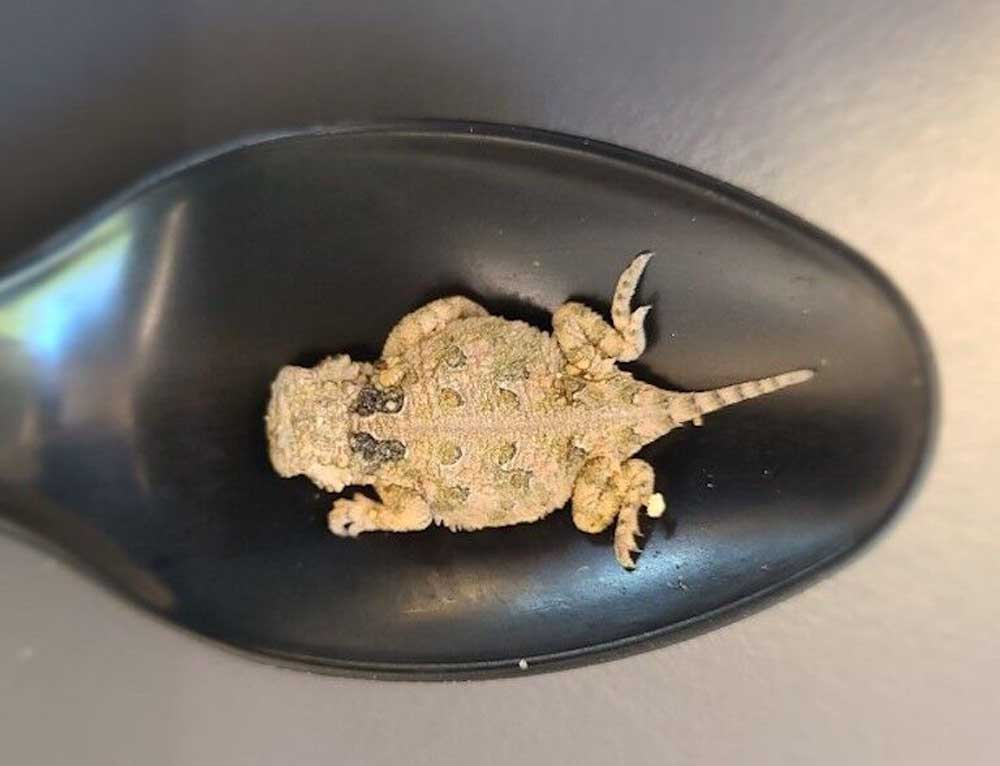Leapin’ Lizards: By Any Name, A Texas Favorite Faces A Difficult Future
Published 11:10 pm Thursday, October 6, 2022

- Working with zoos around the state, including Tyler’s Caldwell Zoo, The Texas Parks and Wildlife is researching ways to return horned lizards to portions of the Texas landscape.
Growing up, family pets in Texas included dogs, cats, goldfish, canaries, sometimes a horse, maybe a rabbit, and almost always a horned lizard, or what was more commonly called a horny toad or horned frog.
If you couldn’t have a dog or horse, horned toads were an easy third choice because all it took to own one was a shoe box with a few holes in it so you could, much to mom’s chagrin, keep it in your room. You did not go to the pet store to get one, just walk out into the yard and keep an eye out in the flowerbeds. Sooner or later one was going to show up.
But that was a long time ago, and since then a lot has changed including the disappearance of horned lizards. The beloved little lizards have not completely gone away, but they certainly are not as commonplace as they were.
There are actually14 species of horned lizards in the U.S., three of which can be found in Texas. Two of those, the short-horned and round-tail lizards exist in fairly stable populations in isolated habitat in the Trans Pecos.
It is the Texas horned lizard that is an icon across Texas, but is believed in such declining numbers it is on the state’s threatened species list.
While there is no definitive answer as to what has happened to the fierce looking but docile creatures, the introduction of fireants and expanded use of pesticides top the probable list of causes.
“We don’t know for sure when they first saw the decline. There was a symptom probably going on for a while, maybe the 60s, 70s, 80s. It really goes back that far, but I don’t know if it was noticed until it became really apparent,” said Nathan Rains, Texas Parks and Wildlife Department wildlife diversity biologist in the Edwards Plateau.
In many ways the horned lizard decline parallels another struggling Texas favorite, the bobwhite quail.
“They have booms and busts, good and bad years and use similar habitat. They mimic quail in a lot of ways,” Rains said.
The biologist, currently spear-heading a research project at Mason Mountain Wildlife Management Area geared toward re-establishing the species, said he is not certain whether fireants are directly or indirectly a cause in the decline. The lizards are diet specific with harvester ants being a large part of their diet, however, it is clear the imported ants outcompete the native species. And while dead horned lizards have been found covered in the ants, it is not clear whether they killed them or found them after they died. Either way, along with insect-killing pesticides and things like the habitat-destructing introduction of Bermuda grass in East Texas, it is an issue.
The research started about 15 years ago first looking at genetics. After that it focused on relocation from one area to another.
“That went on for five or six years and what they ultimately found is that they are a species that have 70 to 80% annual mortality. You can’t catch enough adults to reintroduce,” Rains explained.
Then the department brought in Texas zoos as partners in an effort to captively breed young horned lizards for release. The Fort Worth Zoo is the lead partner, but also participating in the program is Tyler’s Caldwell Zoo, Dallas Zoo, San Antonio Zoo and Fossil Rim Wildlife Center. So far that has also proved to be a learning process.
“A female can lay up to 40 eggs in a clutch. We had a female this year that laid 28 eggs. Right now we have three males and four females, but only one female that laid eggs,” said Yvonne Stainback, curator of birds and reptiles for the Caldwell Zoo.
She added the females seemed to be interested, but the males were not either because of their age or some other reason.
“There must be some kind of mate selection going on,” Stainback said.
Raising the lizards in captivity is not difficult, but it is time consuming and expensive because they are finicky eaters that prefer a diet of small crickets, fruit flies and especially like termites. Maintaining a single adult can cost $500 a year.
“It is not as easily done as we thought it might be,” Rains said of the captive breeding program. “We had a naïve assumption. If we can breed 50 pairs we are releasing hundreds, but we thought it would hundreds of pairs.”
The next step will probably be research into artificial insemination of females to increase production, but even at that restocking will likely be on a localized scale and probably never on a statewide basis.
TPWD has a number of programs for public involvement from reporting sightings in the wild to creating horned lizard habitat. For more information go online to https://tpwd.texas.gov/huntwild/wild/wildlife_diversity/texas_nature_trackers/horned_lizard/.






